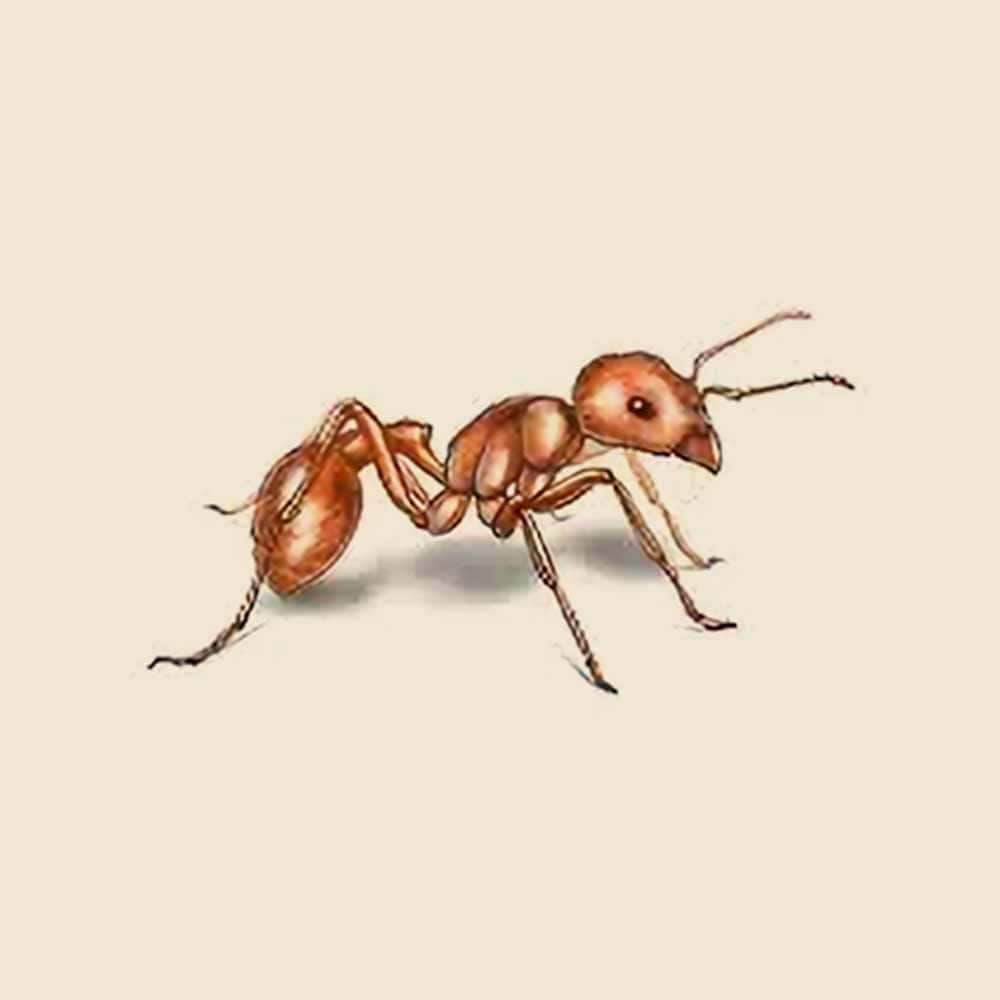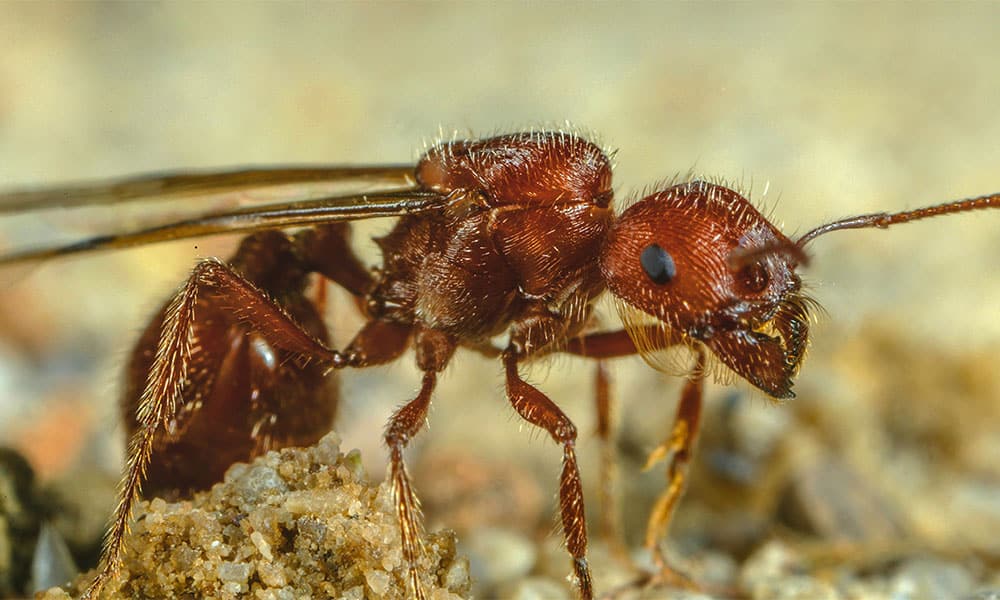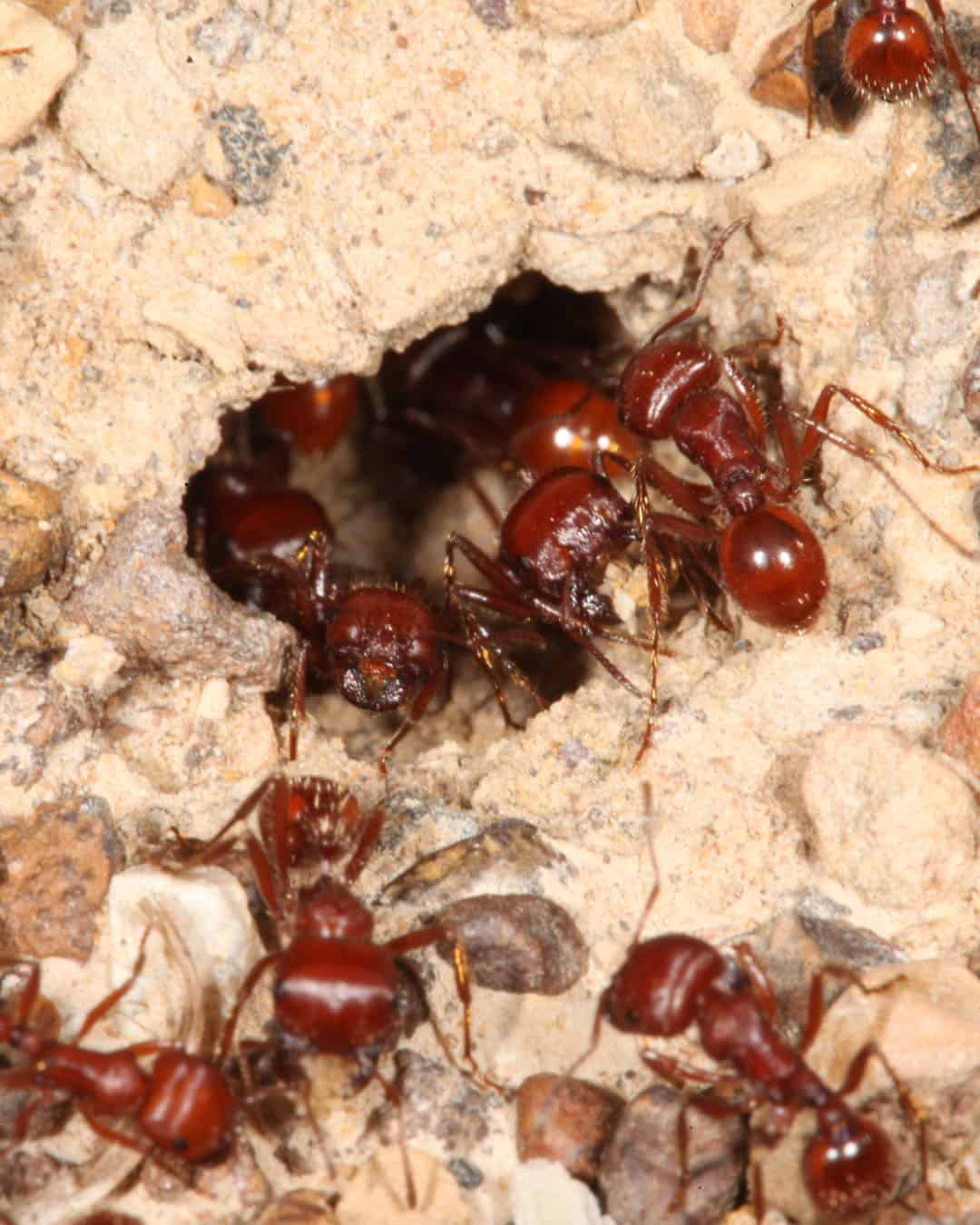Harvester Ant Facts & Information
Harvester ants, known for their large colonies and painful stings, can be a significant concern for homeowners and gardeners. These ants are notorious for their seed-harvesting behavior and large, visible mounds, which can disrupt lawns and outdoor spaces.

Pogonomyrmex
What You Need To Know About Harvester Ants
What do harvester ants look like?
Harvester ants are medium to large ants, typically measuring between 1/4 to 1/2 inch in length. They are usually red, reddish-brown, or black, and have a robust body with a distinct, two-segmented waist. They also have large mandibles for carrying seeds and other food items.
What do harvester ants eat?
Harvester ants primarily feed on seeds, which they collect and store in their nests. They also consume other plant material and occasionally insects. Their name comes from their habit of harvesting seeds from the surrounding environment.
What sort of habitat do harvester ants live in?
Harvester ants are commonly found in arid and semi-arid regions, including deserts and grasslands. They build large, bare-soil nests with a single entrance, often surrounded by a cleared area free of vegetation. These nests can be extensive, with deep underground chambers for storing food.
How do harvester ants commonly behave?
Harvester ants are diurnal and are most active during the day. They create well-defined foraging trails from their nests to food sources and can travel significant distances to gather seeds. Harvester ants are known for their strong mandibles, which they use to carry seeds and defend their colony.
Did you know this about harvester ants?
Harvester ants have a painful sting that can cause swelling and discomfort, but they are not generally aggressive unless their nest is disturbed. They play an important role in their ecosystems by dispersing seeds and aerating the soil through their nesting activities. Interestingly, harvester ants have been studied for their impressive navigational abilities; they use the sun as a compass and can remember visual landmarks to find their way back to the nest.
Understanding Harvester Ant Infestations
Understanding harvester ant infestations is crucial for effective management. Harvester ants build extensive underground nests, often marked by a large central mound and clear, vegetation-free areas around their nests. They can be aggressive when disturbed, and their stings can cause considerable pain and swelling. Additionally, their foraging can impact plant health and soil structure.

How Hearts Handles Harvester Ant Treatment
Hearts Pest Management employs an integrated pest management approach to handle Harvester Ant infestations.
Harvester Ant Inspection
Harvester Ant Treatment
Harvester Ant Prevention
Educational Resources

Think You Might Have a Harvester Ant Infestation?
At Hearts Pest Control, we understand the challenges associated with Harvester Ant infestations and are here to provide professional solutions tailored to your needs. Flourishing in warm and humid climates, they are prevalent in many regions, including San Diego County, Orange County, and Los Angeles County.